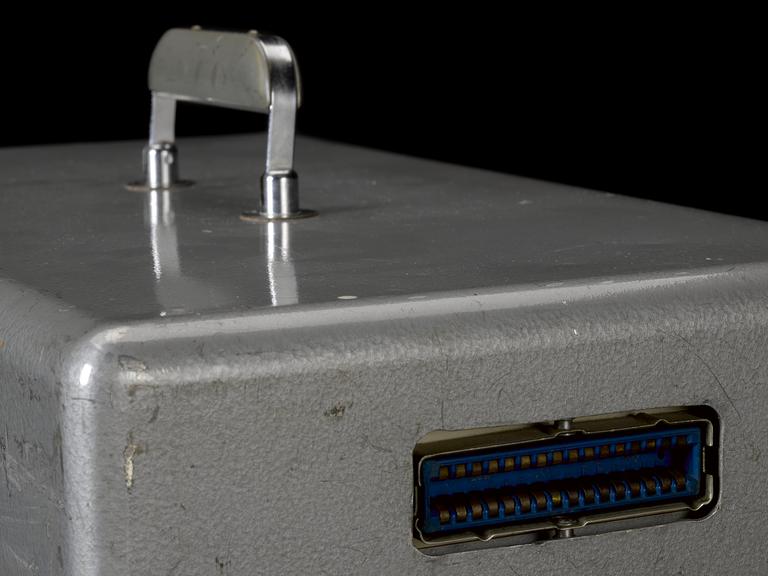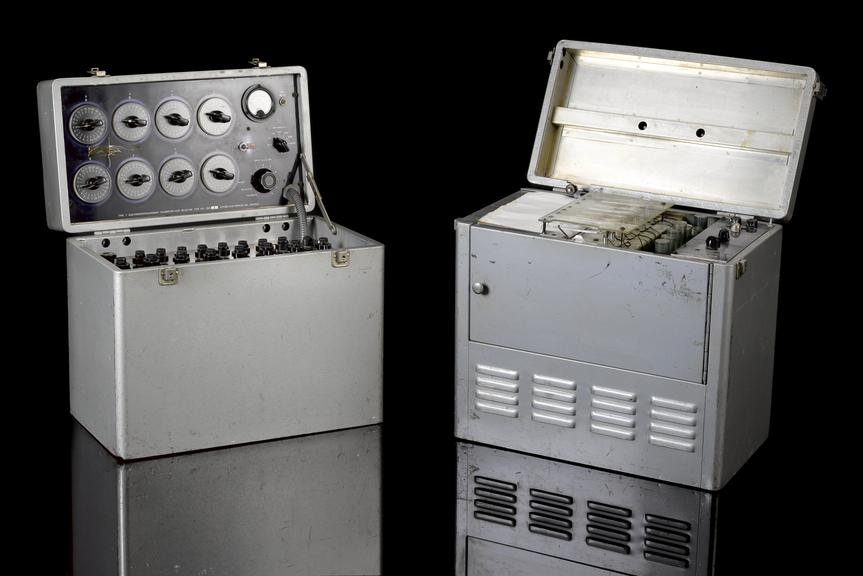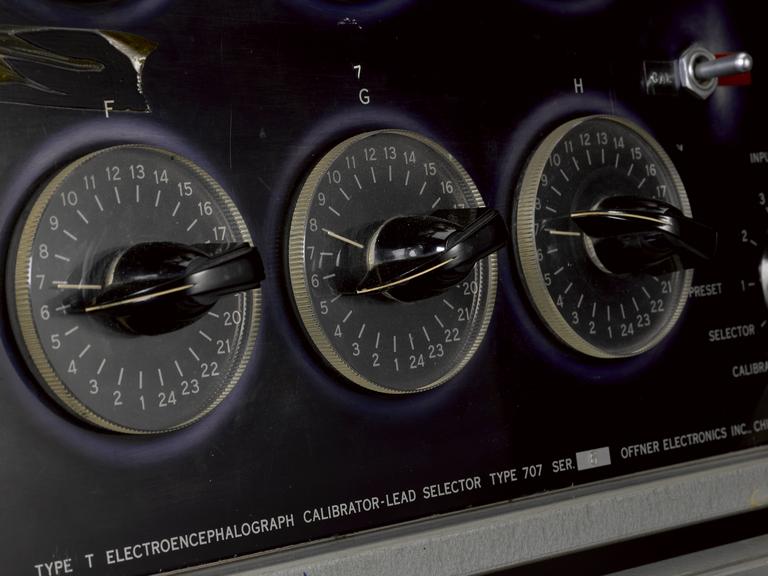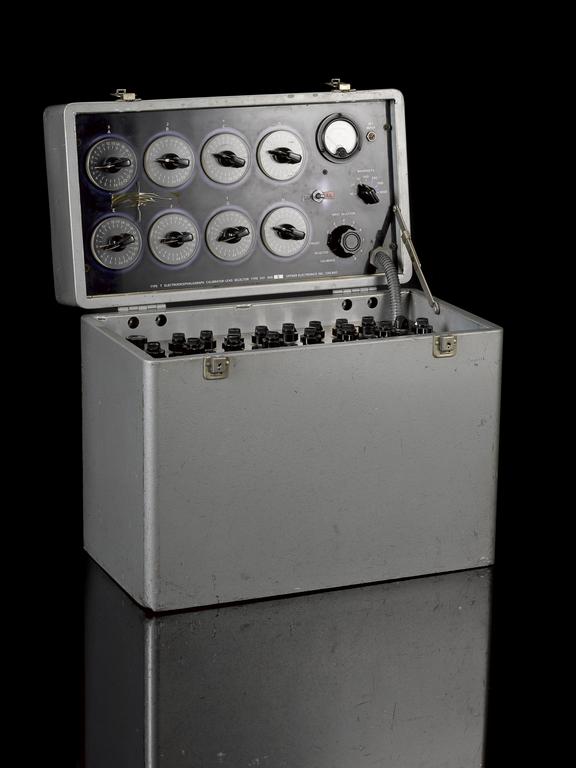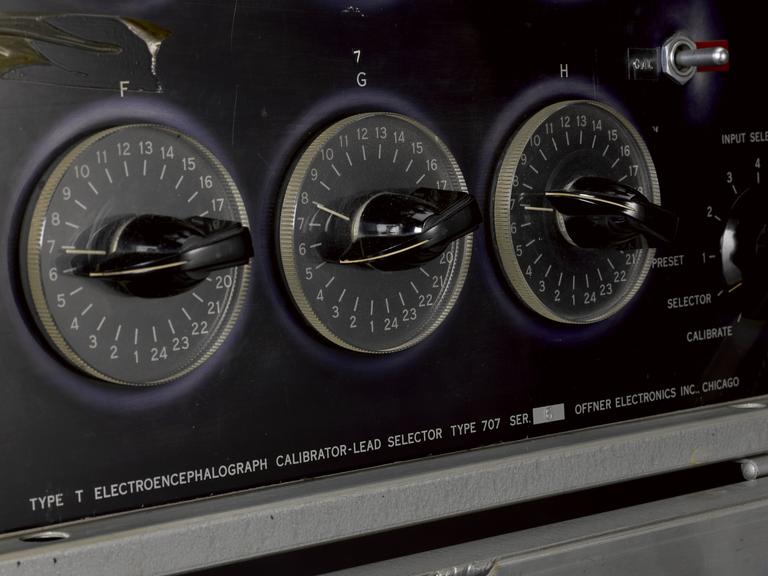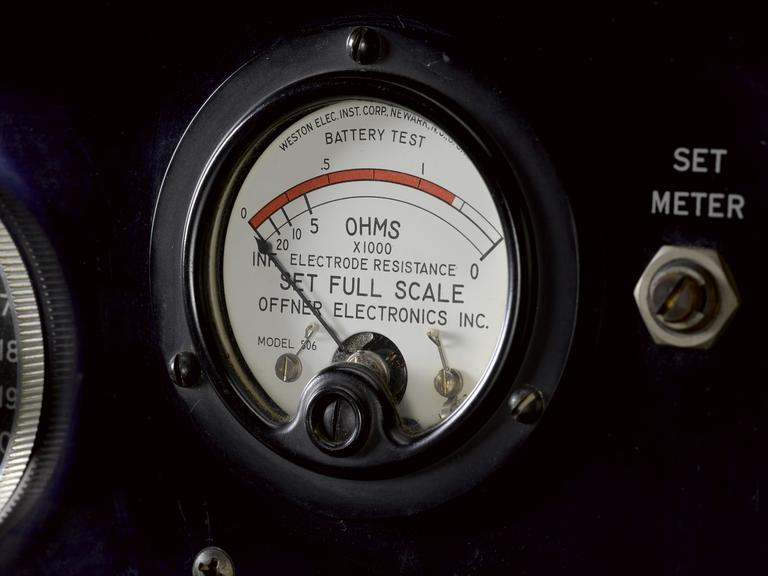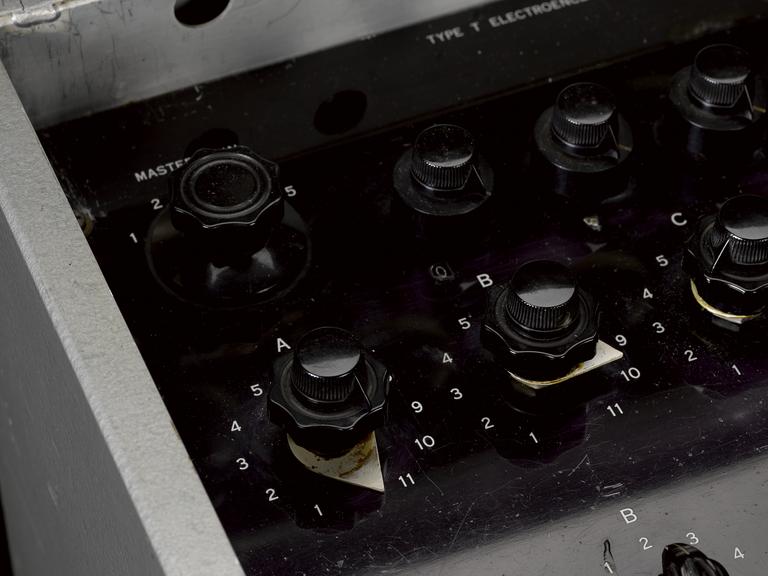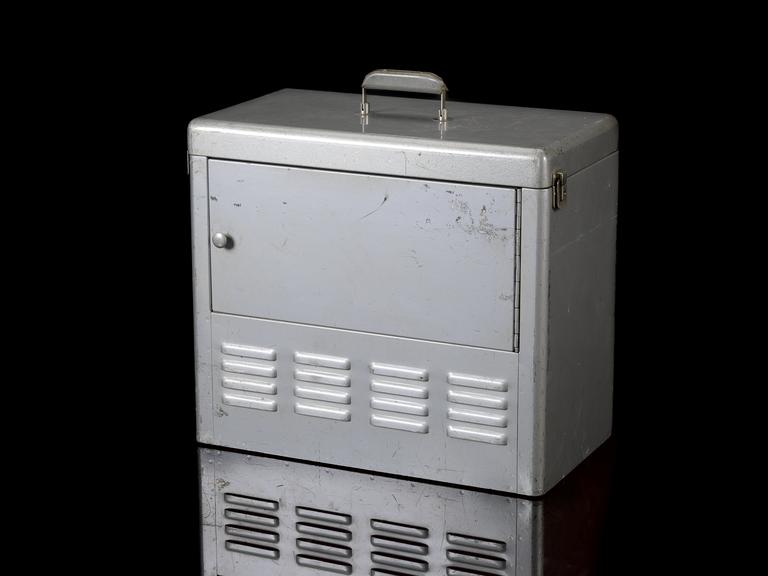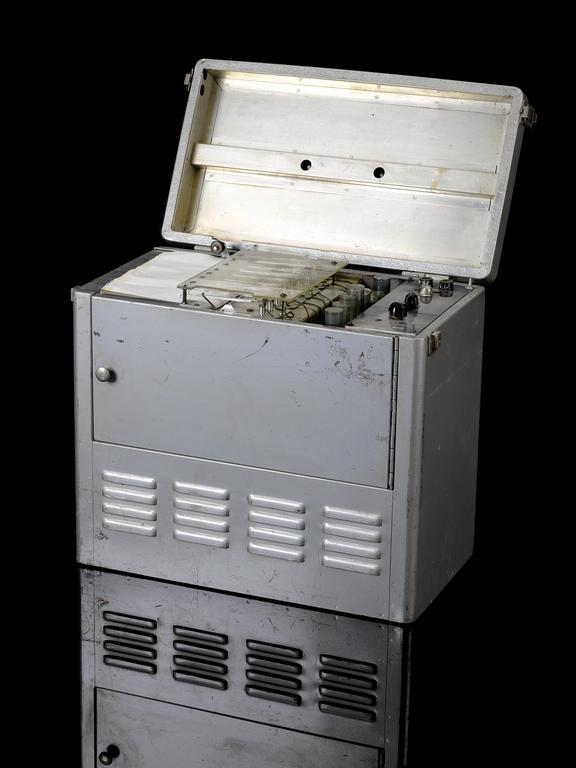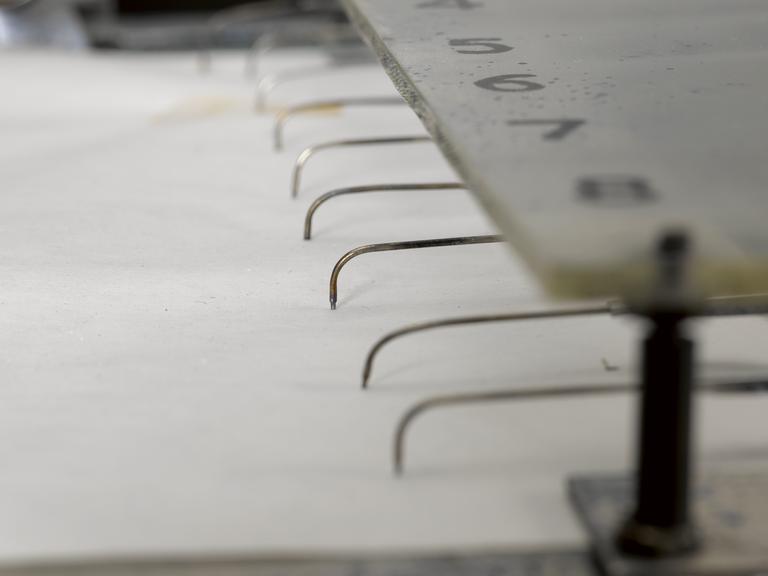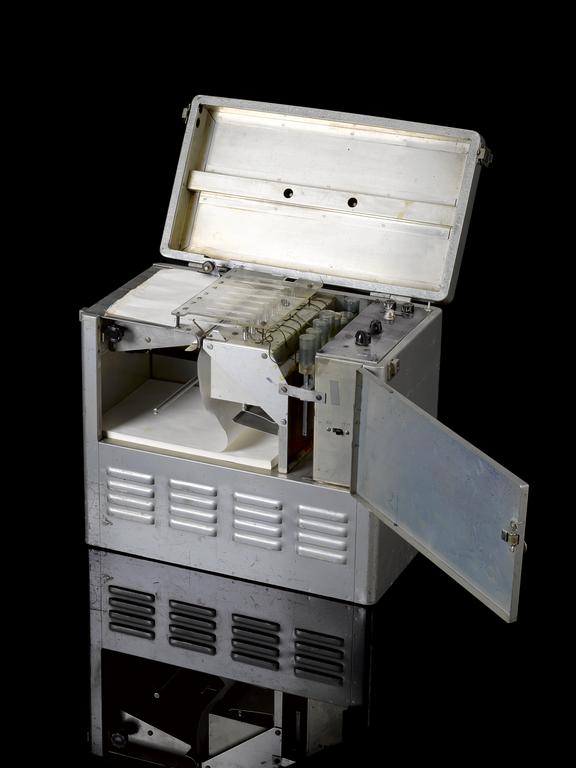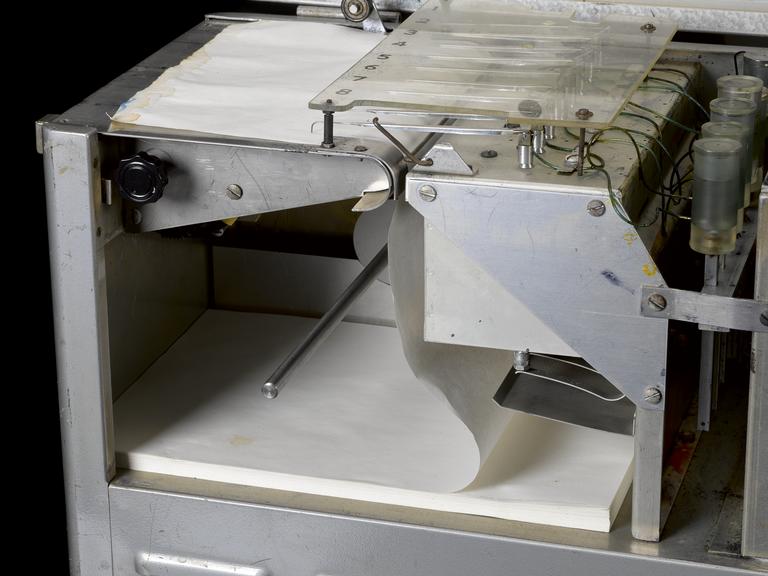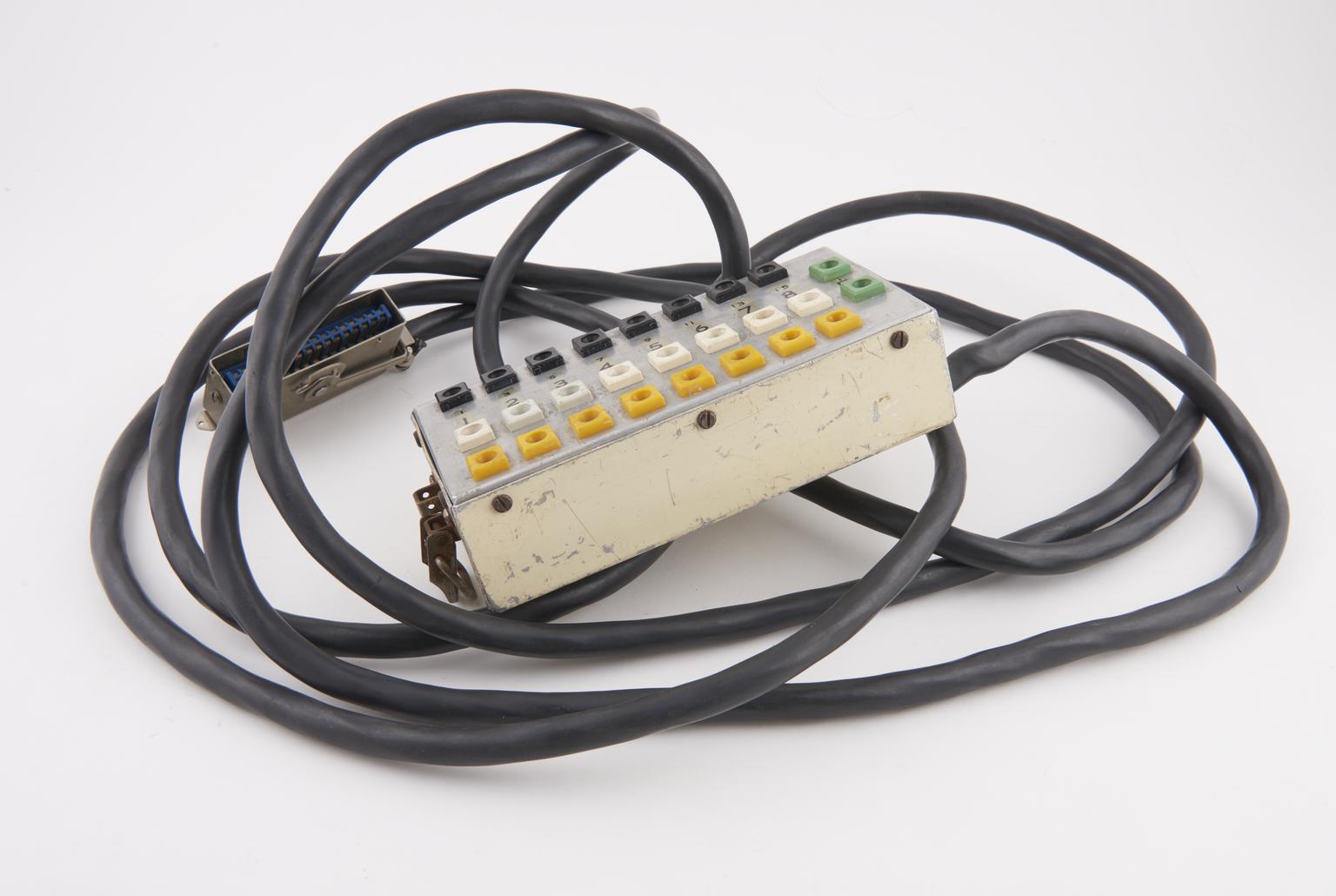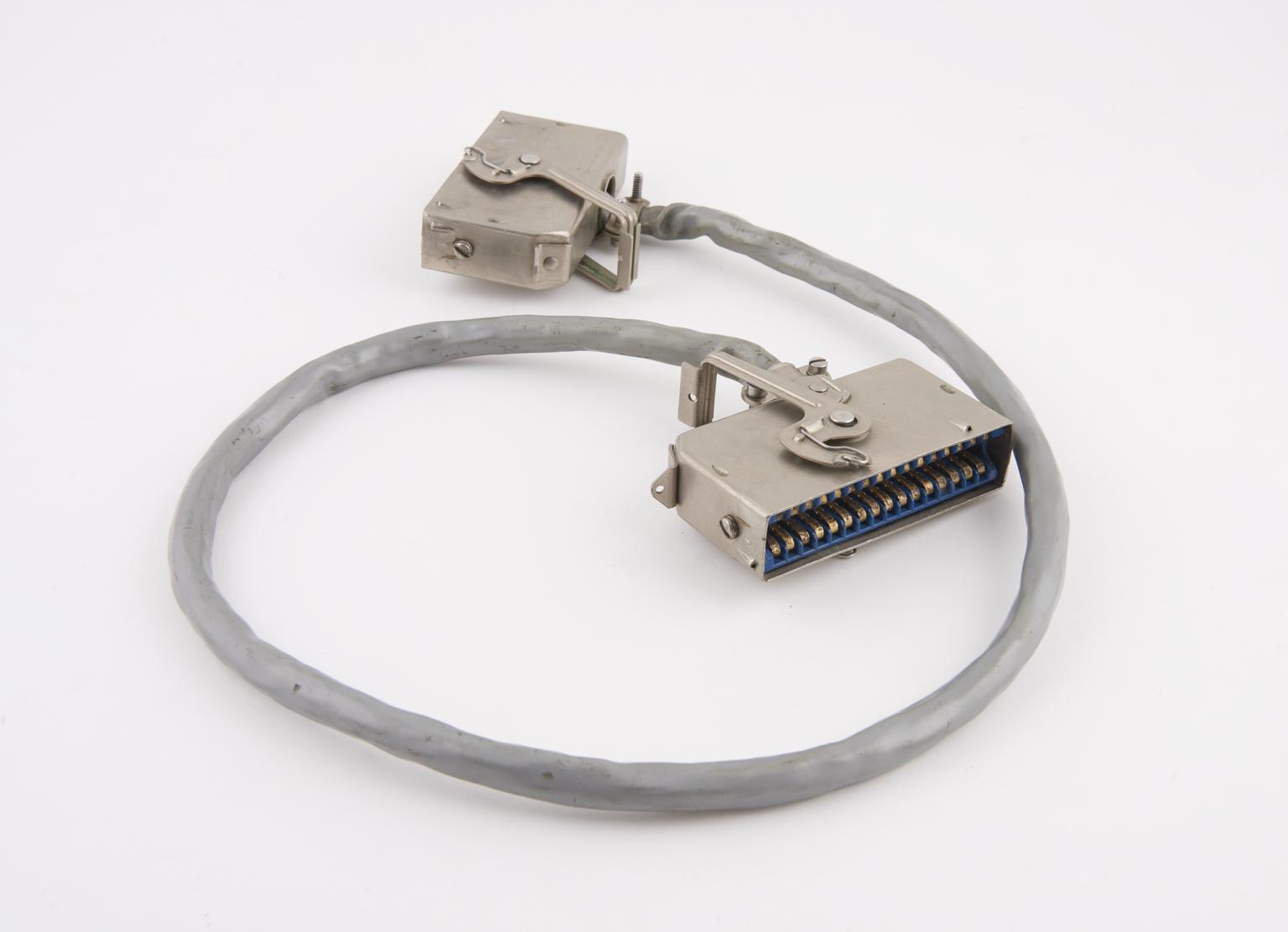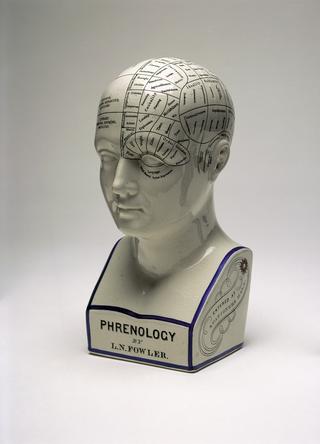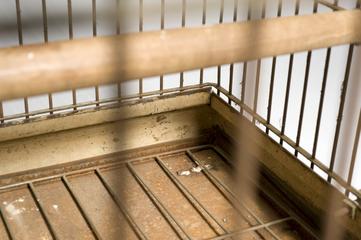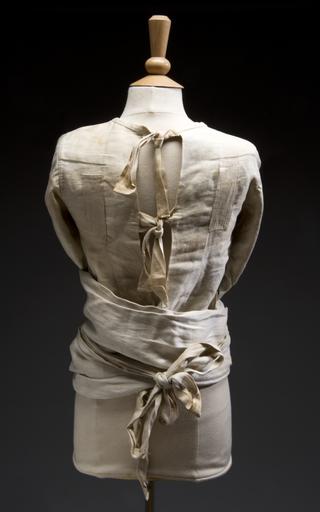Electroencephalogram (EEG) pen recorder
Control unit for Type T Dynograph portable 8 channel EEG pen recorder manufactured by Offner in 1958 and used at the Burden Neurological Institute. The instrument employs direct coupled amplifiers enabling recording of steady potentials and transients. 8 double ganged 24 way switches enable any two of 24 electrodes to be connected to each of the 8 channels.
More
The Type T Dynograph created an electroencephalogram. This is a recording of electrical signals within the brain. The recorder was manufactured and used at the Burden Neurological Institute (BNI). During research, areas of the brain were stimulated and electrical signals recorded by placing insulated stainless steel electrodes directly into the brain. 24 electrodes were connected to each of the eight channels within the pen recorder. The recorder gave a paper read-out of brain activity.
The BNI used this instrument to create the first EEG of an epileptic brain in 1958 (see 2001-193). The BNI was founded by Rosa Burden in 1939. Her husband, the Reverend Burden, had previously set up the first national hospital for mental and psychiatric disorders. The BNI remains an independently-funded research unit specialising in the human nervous system and human neurological disorders. The device was made by Offner in the US.
